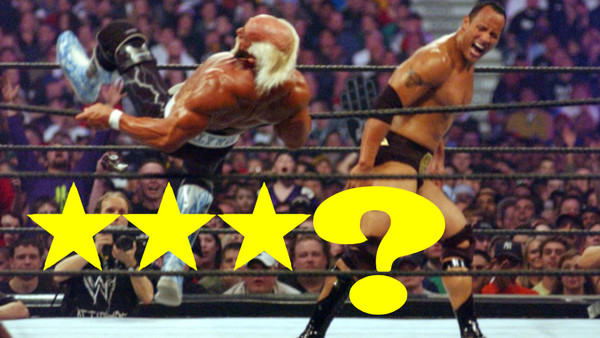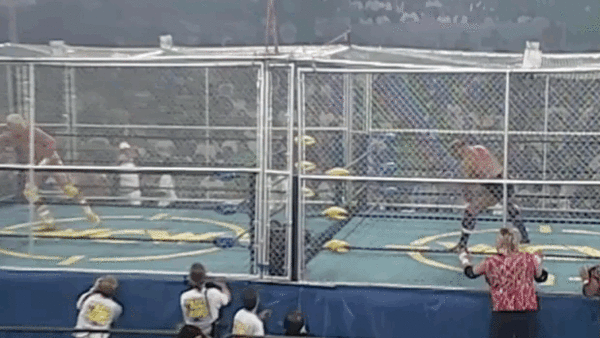7 Awesome Wrestling Matches (That The Critics Hated)
Five-Star Fun.

Your writer makes no apologies for his admiration of the Wrestling Observer's Dave Meltzer.
Some view his controversial star rating system as a mechanism with which to criticise WWE, directly or otherwise, when it is best approached as a shortcut to the wider wrestling world's immense riches. Meltzer was ahead of the curve for years and years, celebrating and rewarding the incredible Japanese scene of the 1990s, and thus allowing Western fans an inroad into the King's Road. His criteria accounts for and rewards in-ring action, innovation, heat, and the difficulty and storyline suitability of the moves deployed. And, most controversially, the criteria has historically rewarded danger, with any written moralistic caveat dwarfed by the shower of stars.
That criteria however doesn't cover flat-out, full-on fun.
Meltzer, you suspect, is not a man who enjoys a guilty pleasure. Some WhatCulture employees, who will remain nameless, pop big time at the sight of Jimmy Del Rey's version of the grind, which they'd watch over Sable's any day. Some deem Kevin Nash the best in-ring talent the New Generation had to offer. Some are as quick to kiss the ring hand of Takayuki Iizuka as he is to bite yours off.
Meltzer, criticised unfairly as a New Japan Pro Wrestling acolyte as opposed to a journalist who covers them, cannot even allow himself the utter glory that is Toru Yano...
7. WarGames - WCW Fall Brawl 1994

"It was a good match by normal standards but nowhere close to previous War Games," wrote Meltzer.
That much was true; divorced from its mythical house show roots and manifested, bloody WrestleWar brilliance, blood didn't fall at Fall Brawl as a result of the company's new, corporate policy. But, on its own merits - and looking back is a luxury Meltzer obviously did not have - this was a barnstormer, the entrepreneurial creativity of which should have seen it celebrated as an enforced and excellent departure from the bloodbaths of old.
Years before Adam Col et al. modernised its in-ring mode, Dustin Rhodes in his guise as The Natural flew at Arn Anderson from all angles before trapping him between rings and sending him head-first into the crevice. He then flew over two sets of ropes to deliver a flying shoulder tackle, and, in another inventive use of his environment, used the roof to add punch to a kick. Arn being Arn - amazing - he sold all this is as if barely surviving a drunken bar fight. Even the costuming was a new and inventive means of putting over the old wartime spirit of teams in the trenches; Dusty Rhodes, brilliantly, decked himself out in the neon silly string threads of his Nasty Boys partners, growing out a mini-mullet for the occasion.
Terry Funk was awesome value, reaching so far to get into the mix that he came a cropper between the rings with his boot flying. He disappeared under both entirely when Jerry Sags pile-drove him into into oblivion.
WarGames did die a dismal death - but not on 28 September 1994.